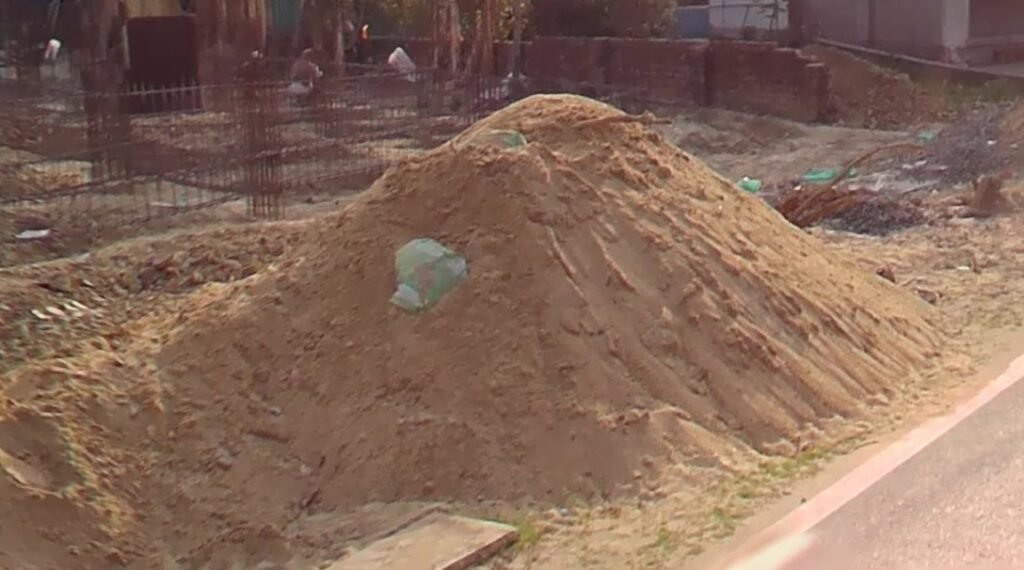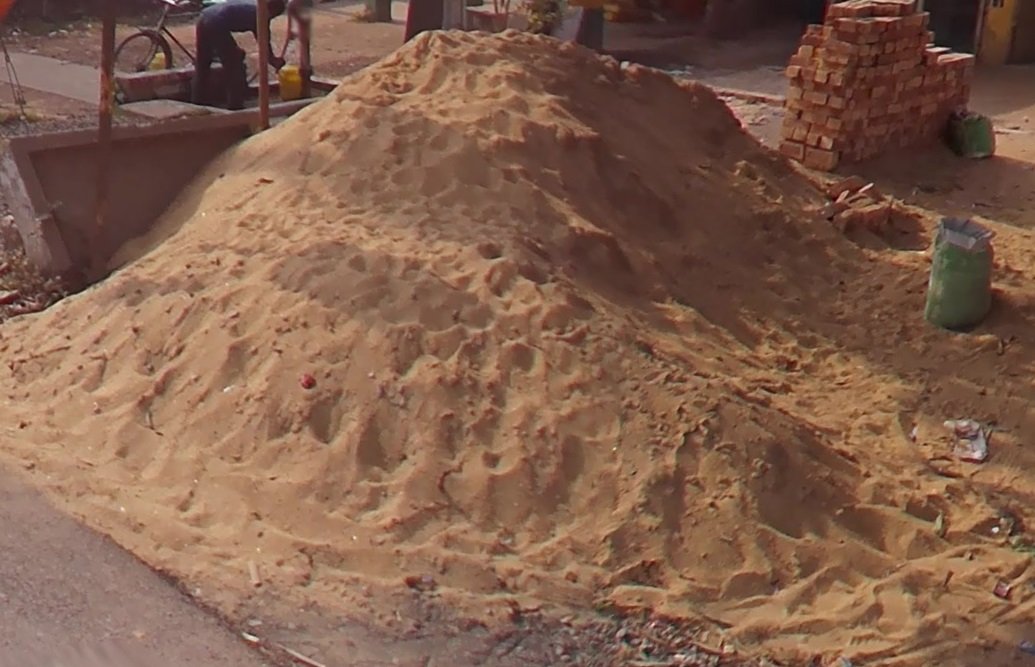Sand is essential in the construction work, here we determine the silt content in sand as per IS Code. Sand is a crucial material, which is used in concrete, mortar and other building works. The good quality of sand is extremely important, as it significantly increases the strength and durability of these materials. One key aspect that affects sand quality is the amount of silt present. Excessive silt can compromise the integrity of structures, impede bonding and reduce their lifespan. To ensure high sand quality in construction, the Bureau of Indian Standards (BIS) has set forth guidelines, particularly in the IS 383:2016 code, which specifies the permissible limits for silt content in sand.
Table of Contents
What’s Silt?
Silt is a material finer than sand but coarser than clay, mostly composed of minerals like quartz and feldspar. It is often transported by water or wind and typically settles in places like riverbeds and lakes. Silt particles are smaller than sand grains but larger than clay particles. In construction, silt is considered a contaminant in sand because it can damage the quality of concrete and it can retain moisture within the plaster.
Why Does Silt Content Matter?
Having silt in sand can weaken the bond between cement and aggregates, which means lower strength in concrete and mortar. High silt levels can also lead to problems like shrinkage, cracking, and poor mix workability. Plus, silt can hold onto moisture, causing issues like efflorescence and other surface problems in concrete structures. So, keeping an eye on silt content in sand is essential for ensuring the quality and durability of construction projects.
Why does silt content matter? Keeping silt levels in check is crucial for the quality of construction materials. Too much silt can cause several problems:
- Weaker Strength: It can weaken the bond between cement and sand, resulting in lower compressive strength in concrete.
- More Shrinkage: Higher silt levels can lead to more shrinkage in concrete, which can cause cracks and reduce durability.
- Workability Issues: Silt can make the mix harder to work with, requiring more water and potentially leading to a weaker end product.
Silt Content in Sand As Per IS Code
The Bureau of Indian Standards (BIS) has set clear rules about how much silt is allowed in sand for construction purposes. Silt Content in Sand As Per IS 383:2016, uncrushed sand (natural sand) can have a maximum silt content of 3% by weight, while crushed sand (manufactured sand) can go up to 15% by weight.
Method for Determining Silt Content in Sand as per IS 2386 (Part I) – 1963
Figuring out how much silt is in sand is super important for quality control in construction. The IS 2386 (Part I) – 1963 lays out a standard way to check the silt levels in sand. This involves a straightforward field test called the “Field Test for Silt Content,” which helps estimate the silt in fine aggregates like sand.
Apparatus Required for Testing of Silt Content in Sand
- Graduated Measuring Cylinder: Either a 250 ml or 500 ml glass cylinder.
- Water: Make sure it’s clean, drinkable water.
- Sand Sample: Grab a sample from the bulk material you plan to use for construction.
Silt Content Test Procedure

- Sampling: Get a representative sample of sand, ensuring it’s free from lumps and debris. Fill the graduated measuring cylinder to the 50 ml mark with your sand sample.
- Adding Water: Pour clean water into the cylinder until it hits the 100 ml mark. You should have a total of 150 ml of sand and water combined.
- Shaking: Cover the open end of the cylinder with a stopper or your palm and shake it well. This helps separate the silt and clay from the sand.
- Settling: Set the cylinder on a flat surface and let it sit undisturbed for about 3 to 4 hours. During this time, the silt and clay will float to the top, creating a clear layer above the sand.
- Measuring: After the settling time, check the level of the silt layer above the sand. Use the markings on the cylinder to measure the thickness of the silt layer in millimeters.
- Sample Collection: Grab a representative sample of sand for testing.
- Washing: wash off the sample through a 75-micron sieve to get rid of silt and clay.
- Drying and Weighing: After washing, dry the sand and weigh it. Then, calculate the silt content as a percentage of the original weight.
Calculation of Silt Content in Sand as per IS Code
- Calculate the silt content as a percentage of the total volume of sand. The silt content test formula is:
Silt Content (%)=(Height of silt layer/ Height of sand layer)×100
Where:
- Height of silt layer = thickness of the silt layer in millimeters.
- Height of sand layer = thickness of the sand layer in millimeters.
Results Interpretation
When the silt content in sand is at or below the acceptable levels of 3% for natural sand and 15% for crushed sand, it’s good to go for construction. If the silt content is higher than these limits, the sand needs to be washed and tested again, or it should be discarded if the extra silt can’t be removed.
Conclusion
keeping an eye on the silt levels in sand is super important for making sure construction materials are top-notch. Following the IS code guidelines is key to creating concrete and mortar that are strong, durable, and perform well. Builders should make it a habit to test sand for silt content regularly and act quickly if the levels go over what’s allowed. This way, they can steer clear of any structural problems and help their projects last longer.

